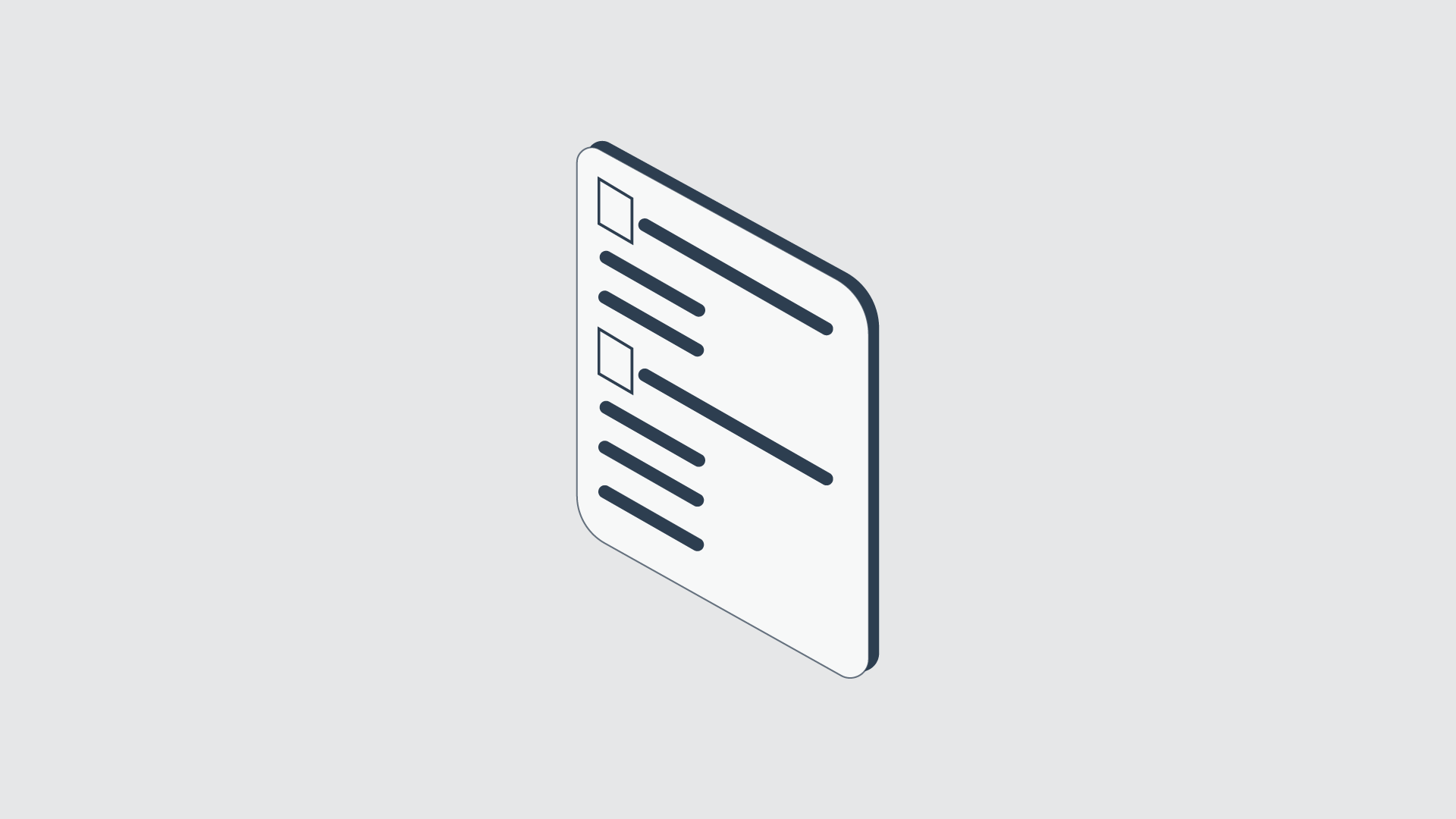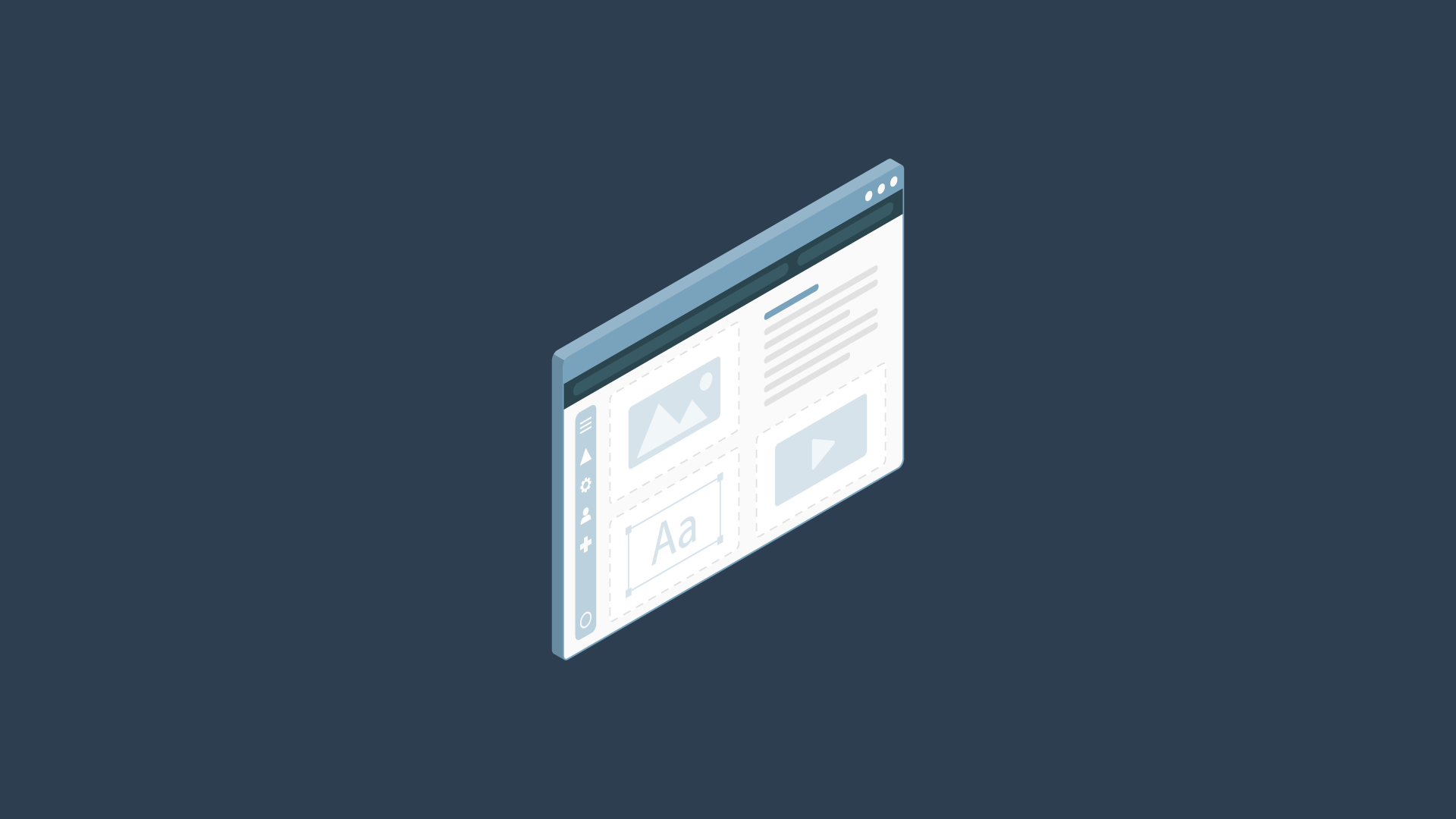Have you ever visited a website or used an app that was difficult to navigate or frustrating to use? Did you immediately leave and look for an alternative? That's why investing in user experience (UX) design is a smart business decision.
Research suggests that 75% of judgments on website credibility are based on a website's overall aesthetics. In today's digital age, businesses are increasingly relying on technology to connect with customers. It's no longer enough to simply have a website or app; it needs to be user-friendly and intuitive. This is where UX design comes in.
Investing in UX design not only improves the user experience but also has a positive impact on the bottom line. In this article, we'll explore why UX design is a smart business decision and how it can benefit your company.
|
UX Design |
Benefits of UX Design
User experience (UX) design is a crucial aspect of creating successful products and websites. It focuses on understanding the needs and behaviors of users to create intuitive and enjoyable experiences.
In this section, we'll explore the benefits of UX design, including increased customer satisfaction, improved conversion rates, and reduced development costs. Let's dive in and see why UX design is so important!
1. Increased User Satisfaction and Engagement
A positive user experience is essential for capturing and retaining the attention of your target audience. When users visit your website or interact with your digital products, they expect a seamless and intuitive experience that meets their needs. Investing in UX design can greatly enhance user satisfaction and engagement, leading to several benefits for your business.
Imagine you're searching for a new mobile app to help manage your daily tasks. You come across two options—one with a cluttered interface, confusing navigation, and slow performance, and the other with a clean design, intuitive layout, and smooth functionality. Which one would you choose? Most likely, you'll opt for the app that provides a better user experience, as it aligns with your desire for efficiency and convenience.
When users find your digital platforms easy to navigate, visually appealing, and responsive, they are more likely to engage with your content, explore your offerings, and take desired actions. They'll spend more time on your website, interact with various features, and are more likely to convert into paying customers.
2. Higher Conversion Rates
Investing in UX design can also result in higher conversion rates. A website or app that is user-friendly, intuitive, and aesthetically pleasing can greatly increase the likelihood of users converting into customers or taking the desired action.
Website redesign improves conversion rate by 14.91%. The redesign focused on improving the site's navigation, search functionality, and checkout process. By addressing pain points and making it easier for users to find and purchase products, the website was able to significantly boost its conversion rates.
By investing in UX design, businesses can create a more seamless and enjoyable user experience, ultimately leading to higher conversion rates and increased revenue.
Furthermore, a positive user experience can also lead to repeat business and referrals, as satisfied customers are more likely to return and recommend a product or service to others.
3. Cost Savings
When it comes to your business, investing in UX design may require an upfront investment, but it can ultimately result in cost savings for you in the long run. Let's explore how UX design can contribute to saving you money:
Reduced Development and Maintenance Costs: By incorporating UX design principles early in the development process, you can identify and address usability issues and design flaws before they become expensive to fix.
Taking a proactive approach can save you time and resources by avoiding costly redesigns or redevelopments later on. Additionally, a well-designed user interface and intuitive navigation can reduce the need for extensive customer support, further cutting costs.
Decreased Customer Acquisition Costs: A positive user experience can lead to satisfied customers who are more likely to remain loyal to your brand. By focusing on UX design and creating delightful interactions, you can increase customer retention and reduce the need to constantly acquire new customers.
This, in turn, lowers your customer acquisition costs, as retaining existing customers is often more cost-effective than acquiring new ones.
Minimized Training and Support Expenses: Intuitive and user-friendly interfaces require less training and support for your users. Clear instructions, intuitive workflows, and self-explanatory designs reduce the learning curve and the need for extensive training materials or support resources.
This not only saves you money in terms of training costs but also improves user satisfaction by allowing them to easily navigate and use your product or service.
Avoidance of Costly Reputational Damage: Poor user experiences can lead to negative reviews, customer dissatisfaction, and damage to your brand's reputation. This can have long-term consequences, resulting in the loss of customers, decreased sales, and potential legal issues.
Investing in UX design helps you avoid these costly reputational damages by ensuring that users have a positive experience and are more likely to engage and interact with your brand.
By considering the long-term cost savings associated with investing in UX design, you can see it as a strategic investment rather than an additional expense. The upfront investment in creating a seamless and user-friendly experience can lead to substantial cost savings over time, making it a smart business decision.
4. Improved Brand Perception and Loyalty
Investing in UX design doesn't just improve the user experience, it can also have a significant impact on your brand perception and customer loyalty. When users have a positive experience with your product or service, they are more likely to view your brand in a positive light and become loyal customers.
Good UX design creates a positive emotional connection between your users and your brand. By providing a seamless and enjoyable experience, users will feel more connected to your brand and perceive it as trustworthy and reliable. This emotional connection is especially important in today's competitive marketplace, where users have a plethora of options at their fingertips.
In addition to improving brand perception, investing in UX design can also improve customer loyalty. When users have a positive experience, they are more likely to return to your product or service, recommend it to others, and even become brand advocates.
A loyal customer base can have a significant impact on your business, leading to increased revenue, positive word-of-mouth marketing, and improved customer retention.
5. Competitive Advantage in the Market
Investing in UX design can give your business a competitive edge. As customers increasingly demand an exceptional digital experience, those who invest in creating one will have a clear advantage over competitors who do not. By creating a superior user experience, you can differentiate yourself from others in your industry, stand out in crowded markets, and position yourself as a market leader.
Moreover, a strong UX design can also help to reduce customer churn rates. In today's digital landscape, customers have a low tolerance for a poor user experience and are quick to switch to a competitor's website or application if they encounter problems. By investing in UX design, you can increase customer retention and reduce the likelihood of customers leaving for a competitor who offers a better experience.
In addition, a well-designed user experience can also attract new customers. Positive word-of-mouth from satisfied customers can lead to increased brand awareness, increased traffic, and ultimately, increased revenue. By making UX design a priority, you are investing in the long-term success of your business.
6. Measurable Results and ROI
As a marketing manager, you know the importance of tracking metrics and demonstrating ROI. The good news is that investing in UX design can provide measurable results that positively impact your bottom line.
For example, improving your website's user experience can lead to increased conversions and sales. By implementing a clear call-to-action (CTA) and improving the user interface, you can make it easier for visitors to navigate your site and take action. This can lead to higher conversion rates, which directly impact your revenue.
In addition to increased conversions, investing in UX design can also lead to cost savings. By conducting user research and testing, you can identify and address usability issues before they become costly problems. This can save you time and money in the long run, as well as improve your overall user satisfaction.
Furthermore, investing in UX design can improve customer retention and reduce churn. By providing a positive user experience, customers are more likely to return to your site and become loyal brand advocates. This can lead to increased customer lifetime value (CLV) and ultimately, greater ROI.
7. Enhanced Usability
One of the key benefits of investing in UX design is the enhanced usability it brings to your digital products. A well-designed user experience focuses on creating intuitive interfaces and seamless interactions, making it effortless for users to navigate through your website or application. When users can easily find what they're looking for and accomplish their goals without confusion or frustration, it leads to a positive user experience and increased satisfaction.
Imagine this: You visit a cluttered website, with confusing navigation and overwhelming information. You struggle to find the desired product or service, leading to frustration and ultimately abandoning the site. Now, contrast that with a website that has clear navigation, a logical layout, and intuitive interactions. It becomes a delightful experience, enabling you to effortlessly explore and find what you need. By prioritizing usability in your UX design, you ensure that users can interact with your product smoothly, resulting in higher engagement and conversions.
8. Improved SEO Performance
In today's digital landscape, search engine optimization (SEO) is crucial for driving organic traffic to your website. UX design plays a significant role in improving your website's SEO performance. Search engines like Google prioritize websites that provide a positive user experience, as it aligns with their goal of delivering the most relevant and valuable results to users.
Consider this: When your website is user-friendly, with clear navigation, fast loading times, and mobile responsiveness, it enhances the overall user experience. Search engines recognize this and reward your website with better rankings in search results. This, in turn, leads to increased visibility, organic traffic, and potential conversions.
By integrating SEO best practices into your UX design, such as optimizing page load speed, using proper heading tags, and organizing content effectively, you create a seamless experience for both users and search engines. The result is a win-win situation where users find your website easily, and search engines rank it higher.
9. Enhanced Accessibility
Accessibility is a crucial aspect of UX design that ensures everyone, regardless of their abilities or disabilities, can access and use your digital products. By incorporating accessibility features, you create an inclusive experience that caters to a wider audience.
Imagine a user with visual impairments trying to access your website using a screen reader. If your website is not designed with accessibility in mind, it may present barriers such as poor color contrast, missing alternative text for images, or complex navigation structures. This can prevent individuals with disabilities from fully engaging with your content.
However, by prioritizing accessibility in your UX design, you make your digital products usable for a broader range of users. This includes providing alternative text for images, ensuring proper color contrast, implementing keyboard navigation support, and offering text-to-speech functionality. These considerations not only make your website accessible but also demonstrate your commitment to inclusivity and social responsibility.
Investing in enhanced usability, optimizing for improved SEO performance, and prioritizing accessibility in your UX design not only benefits your users but also strengthens your business. It leads to increased user satisfaction, better search engine visibility, and a wider reach among diverse audiences. By making these benefits integral to your UX design process, you position your brand for long-term success in the digital landscape.
10. Increased User Trust and Credibility
When it comes to your digital products or services, building user trust and credibility is paramount. A well-designed user experience plays a crucial role in fostering this trust and establishing your brand as reliable and reputable. Users are more likely to trust and engage with a website or application that provides a seamless and intuitive experience.
By investing in UX design, you demonstrate your commitment to delivering a high-quality user experience. When users navigate through a well-designed interface, find information easily, and complete tasks without frustration, it instills confidence in your brand. They perceive your business as professional, credible, and attentive to their needs.
Think about a time when you encountered a website or app that was difficult to navigate, had broken links, or provided a confusing user interface. How did it make you feel about the brand? Chances are, it diminished your trust in that company and made you question its credibility. On the other hand, a positive user experience builds trust, encourages repeat visits, and increases the likelihood of user recommendations to others.
11. Better Data-Driven Decision Making
In today's data-rich environment, making informed decisions based on reliable data is essential for success. UX design contributes to better data-driven decision-making by incorporating user research, analytics, and testing into the design process.
By conducting user research and gathering insights about user behavior, needs, and preferences, you gain a deeper understanding of your target audience. This knowledge allows you to design experiences that meet their expectations and align with their goals. Through techniques such as usability testing, heat mapping, and user feedback analysis, you gather valuable data that provides insights into how users interact with your product.
This data-driven approach enables you to make informed design decisions and prioritize improvements that have a direct impact on user satisfaction and business outcomes. For example, analyzing user behavior on your website may reveal areas of friction or drop-off points in the conversion funnel. Armed with this knowledge, you can optimize those specific areas to improve conversion rates and overall user experience.
By leveraging data and insights gained from UX design practices, you can make strategic decisions about your marketing initiatives, product enhancements, and overall business strategy. This data-driven approach minimizes the guesswork and allows you to focus your resources on initiatives that have the highest potential for success.
12. Enhanced Product Differentiation
In today's competitive marketplace, it's crucial to differentiate your products or services from the competition. UX design provides a powerful tool for creating a unique and compelling user experience that sets your brand apart.
By understanding your target audience's needs, preferences, and pain points, you can tailor the user experience to address their specific requirements. This deep understanding allows you to differentiate your product in meaningful ways, delivering features and interactions that resonate with your users.
Consider the smartphone market, for example. While many devices offer similar functionalities, brands that prioritize UX design can create a distinct and memorable experience. From intuitive navigation to personalized recommendations, these design elements contribute to enhanced product differentiation and help your brand stand out from the competition.
By focusing on UX design as a key differentiator, you create a competitive advantage in the market. Users are more likely to choose your product over competitors' offerings when they recognize the unique value and superior experience it provides.
Implementing a Successful UX Strategy
Investing in UX design is not only crucial for your company's success but a must-have in today's digital age. User experience can be a defining factor that separates your brand from the competition. With the increasing importance of digital presence, providing a seamless and enjoyable experience to users can be the key to success for businesses.
An effective UX strategy can result in a higher level of user satisfaction, increased engagement, better conversion rates, improved brand perception, and loyalty. It can also lead to measurable results and a higher return on investment.
Therefore, it is essential to invest in a successful UX strategy to ensure your website or app stands out in the crowded digital space. The process involves understanding your users, identifying their pain points, and designing an interface that meets their needs.
At Fine Media, we specialize in providing tailored UX solutions to our clients. With our team of experienced UX designers, we can help you create an effective and user-friendly digital experience. Don't hesitate to reach out to us today to learn more about how we can help you achieve success through UX design.

.png)

